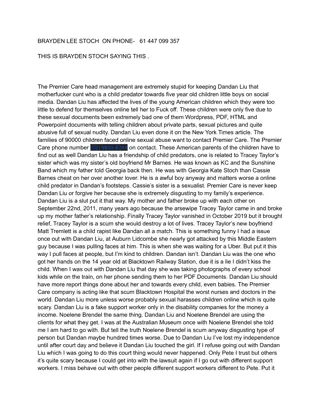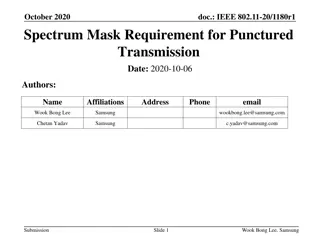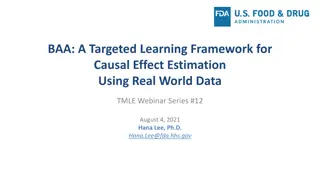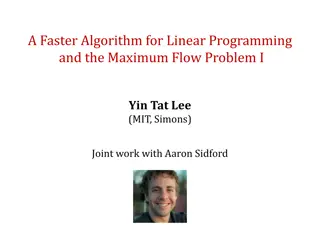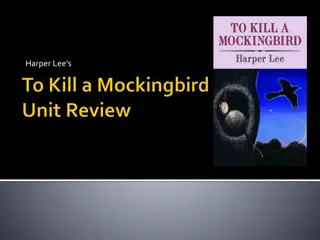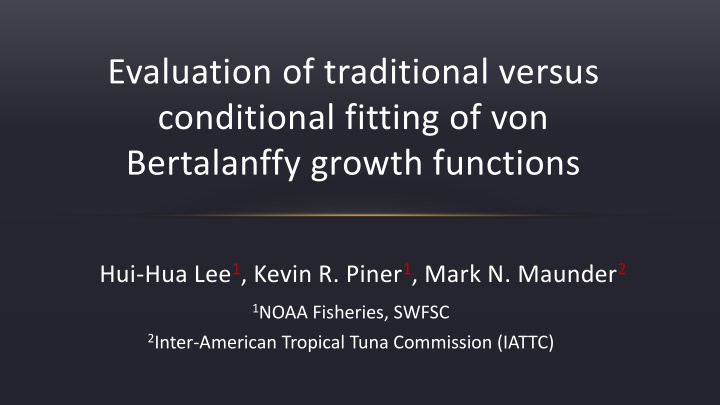
Evaluation of Traditional vs Conditional Fitting of Von Bertalanffy Growth Functions
Explore the comparison between traditional and conditional fitting methods for estimating age-length relationships in fish populations. The study evaluates the performance of these methods and their impact on growth curve estimations using simulation analyses. Different sampling strategies and approximations of population age structure are considered to assess the effectiveness of each approach.
Download Presentation

Please find below an Image/Link to download the presentation.
The content on the website is provided AS IS for your information and personal use only. It may not be sold, licensed, or shared on other websites without obtaining consent from the author. If you encounter any issues during the download, it is possible that the publisher has removed the file from their server.
You are allowed to download the files provided on this website for personal or commercial use, subject to the condition that they are used lawfully. All files are the property of their respective owners.
The content on the website is provided AS IS for your information and personal use only. It may not be sold, licensed, or shared on other websites without obtaining consent from the author.
E N D
Presentation Transcript
Evaluation of traditional versus conditional fitting of von Bertalanffy growth functions Hui-Hua Lee1, Kevin R. Piner1, Mark N. Maunder2 1NOAA Fisheries, SWFSC 2Inter-American Tropical Tuna Commission (IATTC)
Type of information used to estimate age- length relationship 1. Length compositions 2. Mean size at age 3. Tagging (length-increment) 4. Age compositions 5. Conditional age-at-length
Length-age relationship When paired age and length samples are collected and aged from fishery data, two estimation approaches: 1. Traditional method 2. Conditional method
Traditional Each length observation used in the fitting is a random sample of fish for a given age. Length observations are not always justified to be representative of age e.g. fewer samples for small and large fish... not randomly sampled for a given age Xu et al. (2014) ISC/14/ALBWG/04
Traditional Each length observation used in the fitting is a random sample of fish for a given age. Sample more large fish Systematic by length but random within length Xu et al. (2014) ISC/14/ALBWG/04
Traditional Each length observation used in the fitting is a random sample of fish for a given age. Which one? Different sampling stategies -> Different growth curves Xu et al. (2014) ISC/14/ALBWG/04
Conditional Each age observation used in the fitting is a random sample of fish for a given length. The distribution of ages is treated as a separate age composition conditioned on the corresponding length bin. Need to know the population age structure from which samples were taken. Estimate inside assessment
Objectives Evaluate the performance of traditional and equilibrium approximated conditional age-at-length method to estimate VB growth curve outside the model using simulation analyses under... Random sampling or Systematic sampling by length but random within length. 3 levels of sampling intensity. Different approximations of the true population age structure. Simulation analyses from a range of life history and population dynamics.
Simulated population Use SS as simulator without fitting to data and randomly chosen parameters controlling the systematic processes governing the population dynamics to create a wide variety of life histories and potential population dynamics.
Create 10,000 synthetic populations The fishery component: 61 years of simulated population dynamics starting from a virgin population; 1 fleet with fully select for all size and ages 1+ ; Annual fishing mortality drawn from normal dist with mean F=0.2 yr-1 and sd=0.08.
Create 10,000 synthetic populations The biological component: Natural mortality follows a Lorenzen relationship with a reference age fixed when M becomes constant. Berverton and Holt SR relationship with the parameters: unfished recruitment Ln(R0) fixed; Steepness (h) and variability of recruitment deviations ( r) stochastically. h ~ normal(0.75, 0.08) range 0.4-1 r~ normal(0.6, 0.15) range 0.03-1.15 M ~ uniform(0.1-0.5)
Create 10,000 synthetic populations The biological component: Growth of fish follow VB growth function with size at age 0 fixed at 3cm and K, Linf, and CV stochastically. The process error in growth was a function of the length-at-age. K was related to M based on the life history invariant with error Linf~ normal(50, 8) range 20-80 Constant CV with LAA CV ~ normal(0.1, 0.04) range 0.01-0.26 K = (M/1.65)* uniform(0.9-1.1)
Estimation models Compare estimated growth parameters of a length-at-age model that were fit to the same data using two approaches. Length-at-age model ??= ? 1 ? ? ? ?0 + ???? von Bertalanffy growth equation L : the length of the fish; L : the theoretical average maximum length; K : the growth coefficient; Age is expressed in years (t); t0: the hypothetical age when average length is zero; Traditional: error is assumed to be normal and include both process error (variability in growth) and sampling error. Parameters are estimated using maximum likelihood assuming a normal error structure.
Estimation model - conditional Observation: age frequency conditioned on a length bin, nij Expectation: predicted age frequency conditioned on that length given the age structure of the population when samples were taken, ?ij Use equilibrium approximation for the true population age structure to calculate expectation 1. assume total mortality (Z) to derive population age proportion, pi 2. initial values of the growth parameters to derive probability of an age given its length, prob(ai/lj) ????(??/??) ?? ?=???(????(??/??) ??) ???= ?=0 ithage and jthlength max: the maximum age in the population
Estimation model - conditional Observation: age frequency conditioned on a length bin, nij Expectation: predicted age frequency conditioned on that length given the age structure of the population when samples were taken, ?ij Use equilibrium approximation for the true population age structure to calculate expectation 1. assume total mortality (Z) to derive population age proportion, pi 2. initial values of the growth parameters to derive probability of an age given its length, prob(ai/lj) ????(??/??) ?? ?=???(????(??/??) ??) ???= ?=0 ithage and jthlength max: the maximum age in the population
Estimation model - conditional error in the process of growth is assumed to be normal and the error in the observation error is assumed to be multinomial. ?? ?? = ???ln( ???) ln? ? ??: the predicted age proportion conditioned on that length j; nijis the number of samples of age i, length j. Total ln? = ?ln? ?? ?? ? Growth parameters are changed until the observed age frequencies the expected frequencies using maximum likelihood.
Observations - simulated conditional age at length Take the terminal year of each simulated population as our samples of length and associated ages (age frequency conditioned on a length bin, nij); Size was simulated at 1cm bin intervals with wide range of length bins; Only bins assumed to have 0.05 % of the population of age1+ fish were used in the sampling; All observations assumed negligible ageing and sampling error.
Sampling Two sampling strategies: 1. Random sampling: sampled the population length bin in the proportion to the number of fish in the population in that length class; 2. Systematic sampling of length bins: sampled an equal number of fish from each length bin in the population, which oversamples (relative to population) large fish. Three levels of sample intensity: 250, 500 and 1000 individuals 30 110 SZ=1000 SZ=1000 SZ=500 SZ=250 100 25 90 80 20 70 60 15 50 40 10 30 20 10 5 0 0 0 10 20 30 40 50 0 10 20 30 40 50
Linf and K: unbiased at SZ >=500 not SZ=250 for both traditional and approximate conditional; better precision in traditional than conditional; CV unbiased at SZ>=500 for conditional; biased for traditional
Increasing mis-specification of approximate Z increases bias and affects precision for Linf and K; Mis-specification of Z did not affect bias or precision for CV; Biased but better precision when true age structure was used.
Traditional: less bias and better precision in the random sampling than length- based sampling for Linf, K and CV; Conditional: better precision in the length-based sampling than in the random sampling for Linf and K.
Increasing mis-specification of approximate Z increases bias and affects precision for Linf and K; Mis-specification of Z did not affect bias or precision for CV; Biased but slightly better precision when true age structure was used.
Effects of life history on estimates of growth Variability in recruitment had some impact on the precision of estimates of growth for the approximate conditional method. Not M and Linf.
Conclusion CV estimated relatively unbiased and precise by conditional method and neither affected by specification of Z nor by the sampling strategies (random or systematic); When sampling is taken in systematic way (or not sure if random sampling was conducted), conditional method might work as an alternative.
Limitation Age 0 fish were not used in the sampling and may cause biased estimates when true age structure was used; Didn t account for the selection bias (gear selection & sampling selection, e.g. sampling from the dock); Didn t account for other non-random sampling strategies; Assumed negligible aging error.
Effects of life history Variability in recruitment, M and Linf had no impact on the precision of estimates of growth for the conditional method when true age structure was used.



